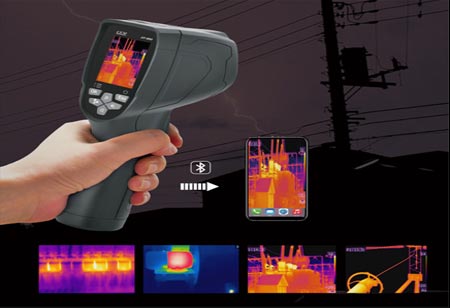Vikram holds a demonstrated history of working in the electrical and electronic manufacturing industry. He is skilled in SCADA, Electrical Wiring, Sales Management, Management, and Printed Circuit Board Design.
Thermal Imagers today produce live images of the heat emitting from equipment while being easy to use and much more affordable, thus making them highly practical and worthwhile solutions for even everyday electrical maintenance.
To use a Thermal Imager, a qualified technician or electrician has to point the imager at the equipment in question, scanning the required area for unexpected hot spots, then squeeze the trigger to capture an image. After completion of inspection, the saved images can be uploaded to a system for further analysis, reporting and also future troubleshooting.
For anyone using a thermal imager, the following three points should be given attention:
• Point 1: Loading of Equipment
In order to effectively detect problems with a thermal imager, the electrical equipment being inspected must be under at least 40 percent of the nominal load, and if possible, maximum load conditionsare ideal.
• Point 2: Safety & Protection
Electrical measurement safety standards under NFPA 70E state that Personal Protective Equipment (PPE) is compulsory when standing in front of any open, live electrical panel. PPE should include flame-resistant clothing, leather-over-rubber gloves, leather work boots, arc flash rated face shield, hard hat, hearing protection or a full flash suit, depending on the situation and the incident energy level (Bolted Fault Current) of the system to be scanned.
• Point 3: Emissivity Levels
Emissivity is defined as the relative power of a surface to emit heat by radiation. The emissivity of the panel in question affects how well a thermal imager will be able to accurately measure the object’s surface temperature.
A thermal imager is able to accurately calculate the surface temperature of an object only if the emissivity of the material in question is relatively high and/or the emissivity level setting on the thermal imager is matched closely to the emissivity of the object.
Thermal imaging is a comparative or qualitative process, when undertaken for electrical inspection. Typical temperature measurements are usually not required. Alternatively, one should aim to look for spots that are hotter than similar
